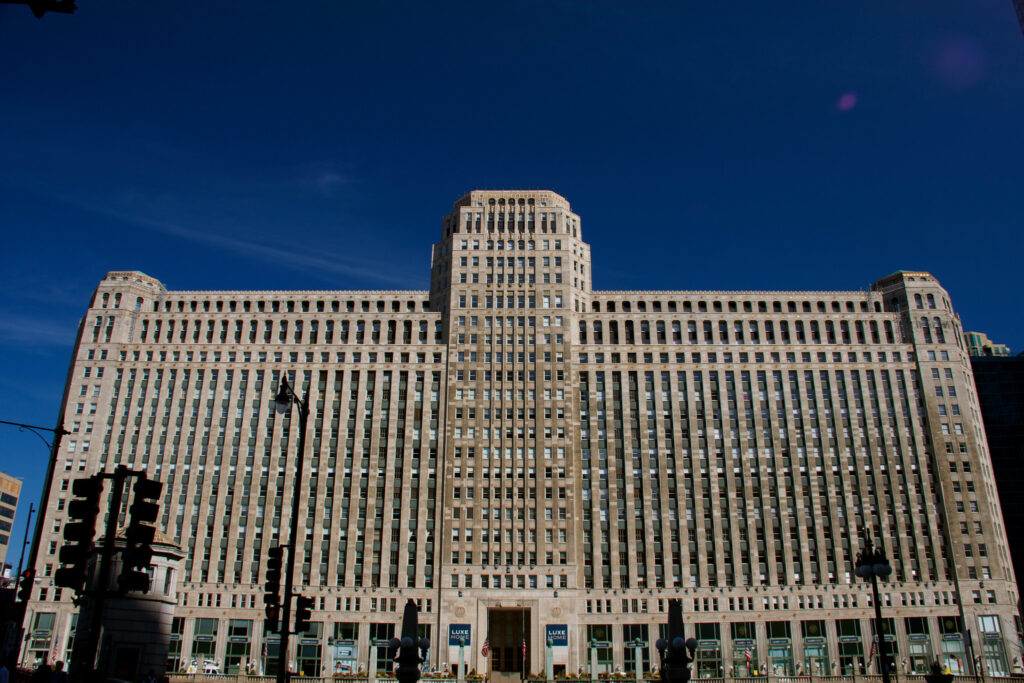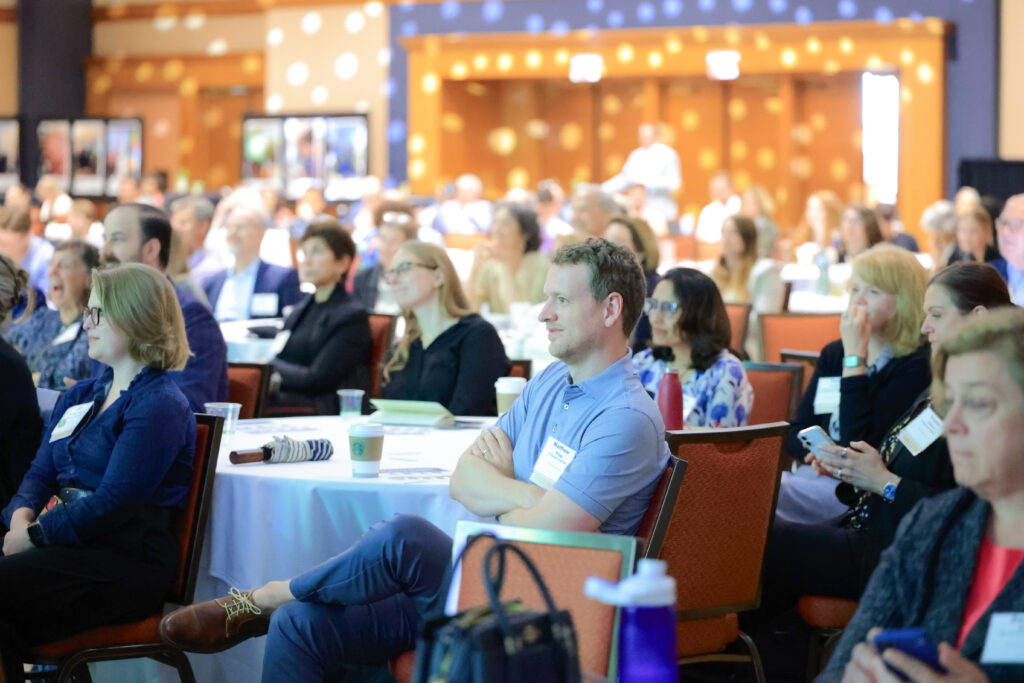This article first appeared in my LinkedIn newsletter: The Sustainable Business. Join the conversation there!
Recently my team attended a talk by Mike Johnson, Director of Materials at the International Living Future Institute, during Tarkett’s Sustainability Leadership Summit in Park City, UT. It was a stark presentation about the earth on life support, and why bold climate action today is so imperative.
At the end of the talk, someone in the audience asked, “how do we get this message to our senior leadership when they’re so focused on cutting costs, growing revenue and ROI?” The answer was so bold that I wanted to share a paraphrased version with you all here.
Mike remarked that our obsession with dollars and return on investment is why we’re in this mess to begin with. We need a new language. Instead of return on investment, we really need to be fixated on the return on future. All the money in the world isn’t going to matter if there isn’t a world to begin.
Choosing to be Circular: The Return on Future should trump ROI
Let’s be honest, Mike could have given the typical ROI answer to this audience member. If the circular economy was all about presenting the business case to businesses, consider the case closed. It’s a no brainer. Forget for a moment that Accenture estimates the economic potential of realizing a circular economy is $4.5 trillion. There’s a lot to unpack with that oft-used statistic. Instead, let’s look at the industries where we see a glimpse of circularity in motion already and some astounding numbers and forecasts:
- A circular economy approach enables automotive companies to increase revenues per vehicle by 15-20 times the sales price and significantly improve profitability by maximizing lifetime performance.
- According to ThredUp, the global secondhand apparel market is expected to reach $350 billion by 2027, up from $177 billion in 2022.
- Resale grew 25 times faster than traditional retail in 2019 and is poised to hit $64 billion by 2024.
- The entire lithium-ion (Li-ion) battery chain, from mining through recycling, is expected grow by over 30 percent annually from 2022 to 2030, with a market a value of more than $400 billion.
- Home goods and furniture are the fastest growing re-commerce categories, growing at a compound annual growth rate (CAGR) of 9 percent since 2020. It is expected to reach $23.6 billion by 2025.
At Rheaply, we often meet with people that want to lead a conversation with the ROI of reuse and circular economy. In fact, we do this ourselves. We share forecasts, case studies, and we welcome the more; in fact, Rheaply’s ROI Calculator can help organizations visualize how much they could potentially save by reusing surplus and idle resources in the workplace.
But the reality is that many profitable, climate-focused organizations (and leaders in their industry for their climate commitments) don’t simply think about the ROI calculation. Rather, they prioritize “Return on future”. These are the born-circular companies, the pioneers in their respective industries. And yes, they cut costs and show incredible profits using their sustainable business models. But they first set the culture and vision around a sustainable future, which gives way to financial return. Let’s use two well-known examples:
Patagonia
The infamous apparel brand has openly published articles telling people not to buy their new products. They actually cap their production, and Nicole Bassett, Patagonia’s former social responsibility manager had this to say: “Capping products may sound like an ax to profit, but in a circular economy, it’s about leaning into materials like recycled wool that are actually cheaper than their virgin counterparts.”
And yet the company that coined “going purpose” instead of “going public” is the ultimate sustainable capitalist success story, with annual revenues around $1bn – unapologetically a for-profit business. They just happen to be for the prosperity of the planet first.
Interface
The late Ray Anderson, the legendary founder and CEO of Interface, underwent a profound transformation in his approach to sustainability, which shook the foundations of modern business thinking. In 1994, facing questions about his company’s environmental responsibility, Anderson had a pivotal moment when he encountered Paul Hawkins’ book, “The Ecology of Commerce.” This moment marked a radical shift in his mindset for the company. He realized that his business practices, typical of the 20th century, were extractive, wasteful, and harmful to the environment. No longer pulled to think about financial gain first, especially over public good, Interface set off on a journey to marry corporate objectives with the need for environmental responsibility. The result? The company cut out $400 million worth of waste according to his book. In about 15 years following the decision to become a sustainable/circular operation, Interface published a report with Forbes Magazine that showed they:
- Cut greenhouse gas emissions by 82 percent
- Cut fossil fuel consumption by 60 percent
- Cut waste by 66 percent
- Cut water use by 75 percent
- Increased sales by 66 percent, doubled earnings, and raised profit margins
Now, after learning this, one might think something along the lines of: “Well, we aren’t a unicorn, born-circular brand like Patagonia, or a company with a business model like Interface”. Maybe your organization cannot simply enact circularity in your production lines due to material shortages or supply chain issues. Or there are regulatory frameworks that make it next to impossible to adopt circular approaches, or it’s a financial burden associated with recycling products and materials. Perhaps it is the lack of a proper R&D investment infrastructure. Maybe that’s all true.
And yet, it doesn’t matter. We’re quite literally running out of time for the reasons and excuses. As global sustainability expert Prof. Dr. Wayne Visser said in the award-winning documentary, Closing the Loop;
"If we don’t solve this one problem, everything else we do, no matter how well intentioned it is, will be like shifting deck chairs on the Titanic.” – Dr. Wayne Visser
Visser also remains optimistic within that video: There are plenty of other complex organizations that are just starting the journey, too, on a much smaller scale, backed by groundbreaking technologies and strategies.
Origins of ‘The Sustainable Business’
Businesses, universities, and governmental agencies should be replacing the question ”How do I most efficiently service my market and customer” with “How do I most efficiently service my market, customer, constituent, community and environment”?
The sustainable business—the title of my newsletter– isn’t one that is just green. It’s one that is just– businesses are in harmony with the environment and community they reside in, and everyone benefits.
It’s stakeholder capitalism, not just shareholder capitalism, as Salesforce and Marc Benioff coined, recognizing that business is the world’s greatest platform for change. It’s about leveraging influence to improve the state of the world, especially if our political leaders cannot, or are behind schedule.
Just last week, we invited DK Singh, who has held the position of Chief Procurement Officer at Walmart, Schneider Electric and ConAgra, to join a fireside chat at Rheaply and he offered this poignant advice on this topic that I’d like to extend to my readers:
“Leaders have to ask: What are other stressors today in the business that the investment in circularity could cure? Circularity, after all, is about total value.” – DK Singh, Chief Procurement Officer, Walmart


